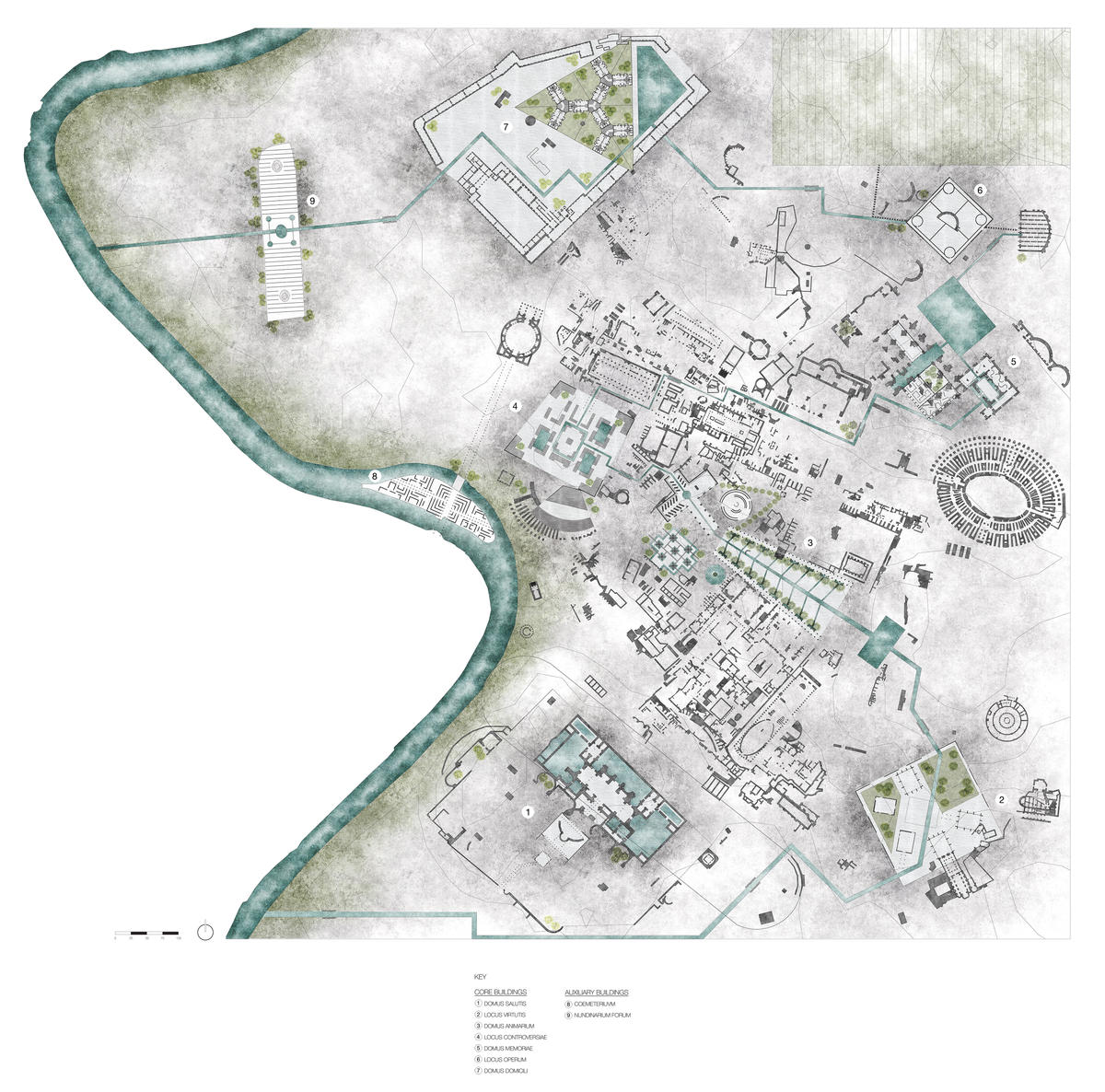Irene Palmiotto
INSTAURATIO URBIS III






Instauratio Urbis III, Superimpositions Deconstruction
An imaginary instalment of the city of Rome through the lens of its often unseen fascist peripheral housing schemes - the borgate. A proposal for the reconciliation of place, community and identity.
School/Level
Category
Year
Instauratio Urbis III perpetrates an imaginary instalment of the city of Rome as a reconceptualisation of the often unseen cultural and social identities of the fascist peripheral housing estates - the borgate - voicing critique towards architecture as means of segregation. The proposal establishes a dialogue of superimpositions between the city’s controversial identities and ruins as parallel but not equal monuments - the Roman ruins as the embodiments of the city’s temporal layers and the borgate as the city’s modern, interrogating, ruins.
The proposal stands as a continuation to Giovanni Battista Piranesi’s instalment of the city of Rome and Mussolini’s extremist urban reconstructions. However, whilst it draws inspiration from Piranesi’s imaginary city, it opposes Mussolini’s urban reconstruction by developing an architectural proposal that envisions the reconciliation of place.
The proposition invites the displaced communities of the borgate to return to the seven Roman hills along with re-designed architectural fragments of the borgate. The imaginary city unravels between the ruins and over a manipulated version of the historical landscape by form of a new superimposed topographical layer that envisions seven architectural propositions, each corresponding to a different borgata and function.
The superimposition of architectural proposals, historical landscape and complexion of ruins ultimately aims to reconstruct the fragile and stratified discontinuity between the city’s eras.